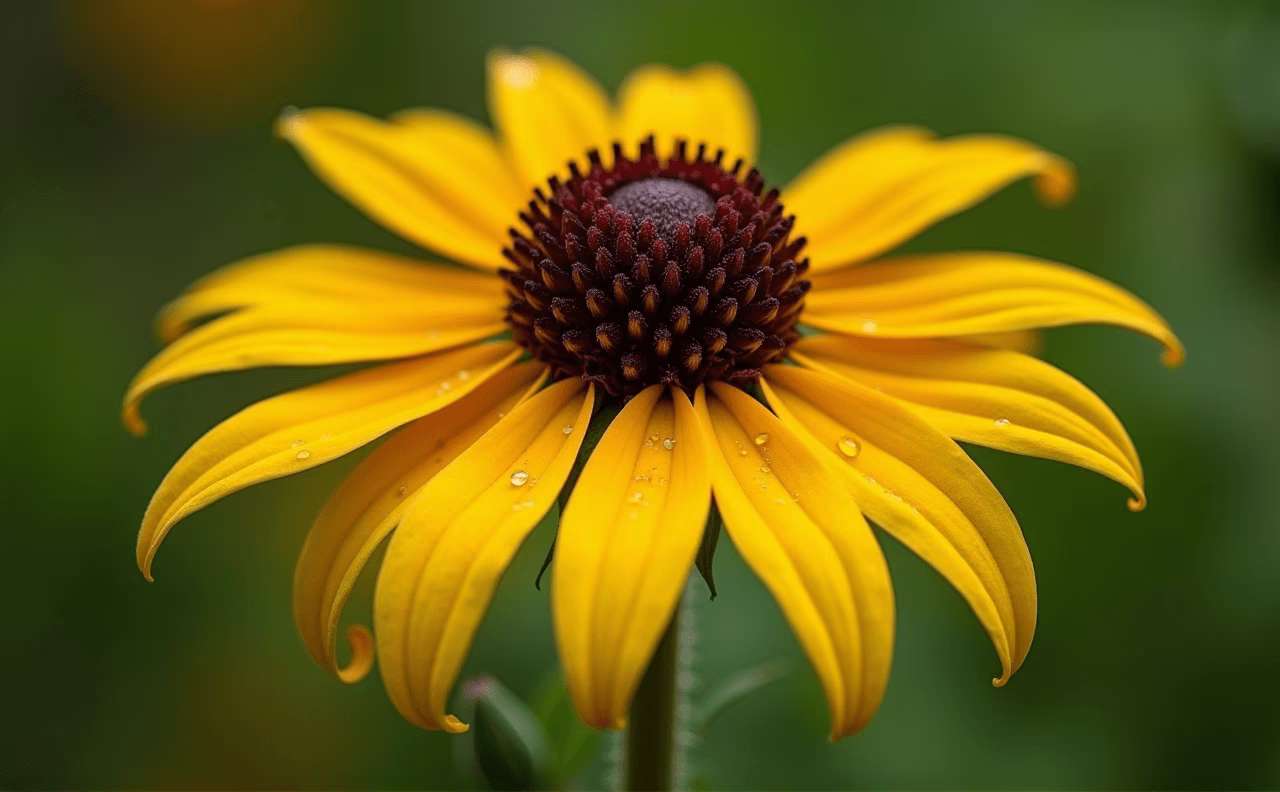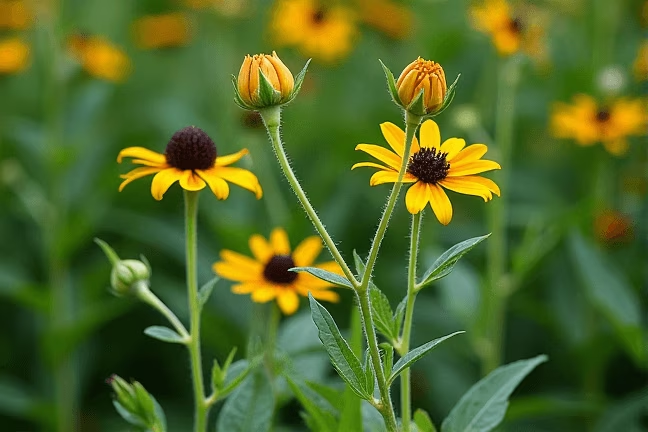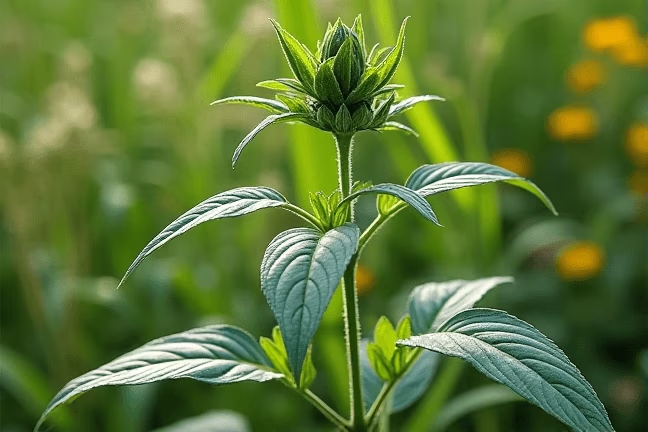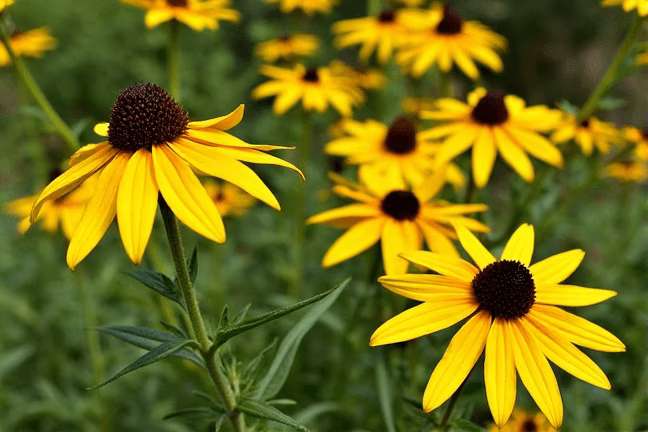
Eared Coneflower
Rudbeckia auriculata
Grow Time
60-90 days
Sunlight
Full Sun
Watering
Every 5-7 days
Toxicity
Non-toxic
How to plant Eared Coneflower: Step-by-Step Guide
Growing Guide
Preparation
Choosing Eared Coneflower Seeds or Plants: Hello, green thumb in the making! If you're just starting out with gardening, the Eared Coneflower is a great choice because it's hardy and low-maintenance. You can either start from seeds (available at garden centers) or buy young plants if you want to skip the germination stage.
When to Plant: Eared Coneflowers love warm weather, so you should plant them after the last frost has passed, usually in late spring or early summer. If you’re sowing seeds indoors, start about 6-8 weeks before the last expected frost.
Tools and Materials You’ll Need:
- Eared Coneflower seeds or young plants
- A pot (if planting in containers) or a small garden bed
- Regular garden soil (they aren’t too picky about soil type)
- A trowel for digging
- Watering can or hose
Tip: These flowers are pretty tough, so you don't need fancy equipment—basic tools will do just fine!
Planting

If Using Seeds:
- Fill small pots or seed trays with moist soil.
- Sprinkle the seeds on top of the soil and lightly cover them with a thin layer of soil (about 1/8 inch deep).
- Water gently, keeping the soil moist but not soggy.
- Place them in a sunny spot indoors where they'll get plenty of light.
- Seeds will germinate in about 7-14 days.
- Once the seedlings have grown a few inches tall and the weather has warmed up, you can transplant them outdoors.
If Using Young Plants:
- Choose a sunny spot in your garden or a large pot.
- Dig a hole slightly larger than the root ball of the plant.
- Gently remove the plant from its container and place it in the hole.
- Backfill the hole with soil and press down lightly around the base.
- Water thoroughly after planting.
Tip: Space the plants about 18-24 inches apart to give them room to grow and spread their leaves.
Growing Care



Sunlight Needs: Eared Coneflowers thrive in full sun, so make sure they get at least 6 hours of direct sunlight every day. If you live in an area with really hot summers, a bit of afternoon shade won't hurt.
Watering Routine:
- Water your Eared Coneflowers regularly, especially during the first growing season, to help them establish strong roots.
- Once established, they are quite drought-tolerant, but it’s still good to water them when the top inch of soil feels dry.
- Aim to water at the base of the plant rather than over the leaves to prevent disease.
Fertilizing Tips:
- Eared Coneflowers don’t need much fertilizer. If you want to give them a boost, use a balanced, slow-release fertilizer once at the beginning of the growing season.
- Too much fertilizer can actually harm them, so less is more!
Support and Pruning:
- If you notice the stems getting too long and floppy, you can stake them gently to keep them upright.
- Deadheading (removing spent flowers) encourages more blooms and keeps the plant looking tidy.
Harvesting

When to Harvest Seeds: Eared Coneflowers are primarily grown for their beautiful blooms rather than edible harvests. However, if you’d like to collect seeds for next year:
- Wait until the flower heads have dried on the plant.
- The center cone will turn brown and the seeds will be easy to remove.
- Simply shake or rub the cone to release the seeds.
How to Harvest:
- Cut the dried flower heads with scissors or pruners.
- Place them in a paper bag and shake gently to release the seeds.
- Store the seeds in a cool, dry place until you're ready to plant them again.
Tip: Leaving some flower heads on the plant over winter can provide food for birds and add interest to your garden.
Plant Care FAQ
Q: Why are my Eared Coneflower leaves turning yellow?
A: Yellow leaves can be a sign of overwatering or poor drainage. Make sure the soil isn’t waterlogged and adjust your watering schedule accordingly.
Q: Do Eared Coneflowers attract any pests?
A: Generally, they are pest-resistant, but you might occasionally see aphids or spider mites. A strong spray of water or insecticidal soap can take care of these issues.
Q: Can I grow Eared Coneflowers in containers?
A: Absolutely! Just make sure the container is large enough (at least 12 inches in diameter) and has good drainage holes.
Q: How do I encourage more blooms?
A: Regular deadheading (removing spent flowers) will encourage the plant to produce more blooms. Also, ensure they are getting enough sunlight.
Q: Will Eared Coneflowers come back every year?
A: Yes, they are perennials in most climates. They will die back in the winter but return in the spring. In colder zones, they might act as annuals unless heavily mulched.
Pro Tips
1. Companion Planting
Eared Coneflowers pair beautifully with other native plants like Black-Eyed Susans and Purple Coneflowers, creating a vibrant and pollinator-friendly garden.2. Natural Pest Control
Encourage beneficial insects like ladybugs and lacewings by planting Eared Coneflowers alongside herbs such as dill and fennel.3. Winter Interest
Leave some dried flower heads on the plant through winter; they look striking covered in frost and provide food for birds.4. Easy Division
Every few years, you can divide your Eared Coneflowers in early spring to rejuvenate the plant and get more flowers.5. Cut Flowers
Eared Coneflowers make excellent cut flowers. Cut them when they are just starting to open for the longest vase life.6. Mulching Benefits
Apply a layer of mulch around the base of the plants to retain moisture, suppress weeds, and protect the roots during winter.7. Low Maintenance Beauty
These flowers are perfect for beginners because they require minimal care and still reward you with abundant blooms.